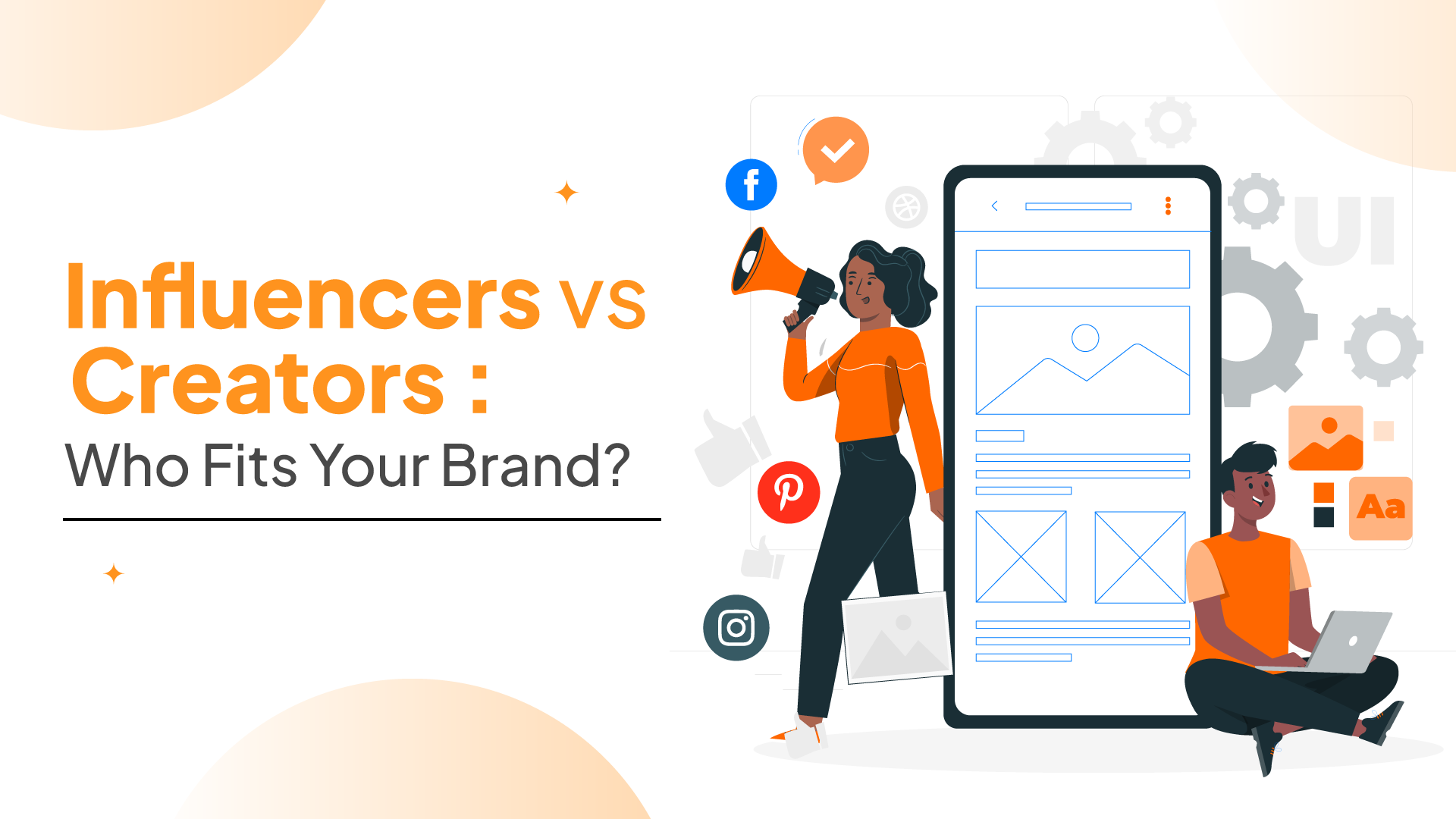

marketing content marketing
Influencers vs. Creators: Who Fits Your Brand?
Influencers vs. Creators: Who Fits Your Brand?
Influencer marketing has become an essential channel for modern brands: 76% of users have made a purchase after they saw a product on social media. The roles of influencers and content creators in today’s digital marketing often overlap, however, there is a difference between their roles and purposes. While both influencers and content creators produce engaging content, their core missions and the value they bring to brands differ significantly. In this article Nadia Bubennikova, Head of Agency at Famesters, will guide you through this difference.
Who is an Influencer?
Influencers have a personal brand, a dedicated following on social media and a focus on influencing: creating just a pretty picture is not crucial for them. They focus on gaining the trust of their audience and use their authentic connections to inspire and influence people’s lifestyle choices and purchasing decisions.
Influencers are valuable partners for brands looking to tap into their dedicated follower base. Influencers use their authentic connection to introduce products in a way that feels personal and trustworthy, often leading to significant sway in their followers' decisions.
What about Content Creators?
Unlike influencers, who emphasize their personal brand and the relationship with their followers, creators focus on the content itself.
They are not just seeking followers; they are motivated by a desire to express their creativity and share their unique vision. They see themselves as artists, and this often results in deeply engaged audiences who appreciate their dedication to quality and authenticity.
As for brand-creator partnerships, creators’ mission lies in creating high-quality creatives for IP rights transfer, enabling brands to leverage this content in their paid social media campaigns.
How to Choose the Right Partner?
Accordingly, if a brand aims to buy IGC, they will go to creators, or small influencers who do not have a lot of followers, and possibly even without an audience at all. Why? Because they want to buy creatives according to the brief.
The difference between influencers and creators is so significant that even within a single advertising campaign, both can be used simultaneously but for different purposes. Thus, if the strategy indicates better performance with macro- or mega-influencers, we specifically use them in the launch.
At the same time, at Famesters, we can also partner with very small creators within the same campaign solely for the purpose of obtaining IGC: 66% of brands admit that IGC performs better than the content created by a brand itself or somewhat equal.
These represent two distinct goals within the same campaign.
Therefore, partnering with creators or influencers depends on the brand's goals: for marketing needs, brands will turn to influencers, while content creators provide high-quality IGC.

Nadia Bubennikova
As a top executive in Influencer Marketing Nadia has a broad expertise in IM-campaigns on YouTube, Twitch, Instagram, and TikTok across English-speaking Tier-1 countries, the EU, CIS, LatAm, MENA & SEA.
With fluency in English, Spanish, Polish and Russian, she brings a wealth of linguistic and cultural expertise to my role. Additionally, she possess extensive experience in team management, multitasking, and executing successful Gaming, Mobile, Software, FinTech, iGaming and Crypto Influencer campaigns.
At Famesters, her priority is to ensure that each and every client receives exceptional service and results. Whether managing cross-functional teams, negotiating with stakeholders, or leading the development of new campaigns, she has dedicated to driving growth and success for the company.




